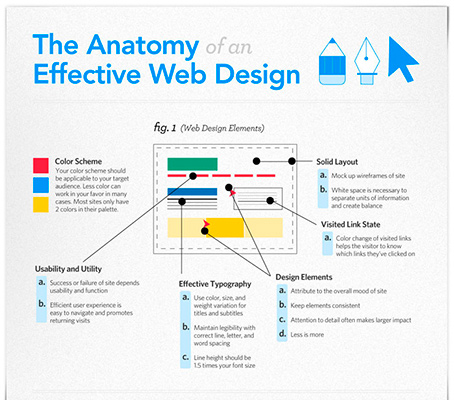If you want your internet site to work well on all gadgets, learn the fundamentals of responsive web design. Guarantee your site looks good on any kind of display dimension. Maintain mobile customers delighted and involved. Increase your website's visibility on search engines. Google favors mobile-friendly sites. Use liquid grids, adaptable images, and media queries. See to it your web content is accessible on all devices. Examine your website on various displays for the best user experience. Mastering these principles is crucial for effective receptive style. Learn more about enhancing your web site's functionality with responsive layout methods.
Value of Responsive Web Design
Comprehending the importance of receptive web design is crucial in today's digital landscape. Your internet site requires to be accessible and straightforward across numerous devices, consisting of desktop computers, laptop computers, tablet computers, and mobile phones. With the boosting use mobile devices for internet browsing, having a receptive style is no longer simply a nice-to-have feature yet a need.
When your site is receptive, it adjusts perfectly to different display dimensions and resolutions, giving an optimum viewing experience for your visitors. This flexibility makes sure that your content stays legible, images are properly displayed, and navigation is easy to use no matter the tool being made use of. By dealing with the demands of mobile individuals, you can boost individual contentment, increase involvement, and inevitably drive conversions.
In today's affordable on the internet atmosphere, having a receptive site can likewise positively affect your online search engine positions. seo for companies like Google prioritize mobile-friendly internet sites, so by embracing receptive layout, you not only improve the individual experience but also boost your presence and get to online.
Key Principles of Responsive Design
To successfully carry out responsive layout on your website, concentrate on understanding the essential principles that regulate its flexibility across different gadgets. One basic concept is fluid grids, which includes using relative units like portions as opposed to dealt with systems like pixels for layout design. https://cashspkfy.dbblog.net/3132591/start-your-course-to-ending-up-being-skilled-at-social-networks-advertising-by-learning-key-techniques-and-methods enables components to resize proportionally based on the display dimension.
One more crucial principle is flexible images and media, where photos and video clips are sized in a manner that gets used to the container they're in, guaranteeing they maintain their percentages on different devices.
In addition, media questions play an important duty in responsive layout by allowing you to apply different designs based upon the tool's features, such as screen width. It's important to focus on web content and performance to ensure that users can access one of the most essential details no matter the device they're utilizing.
Implementing Responsive Layout Techniques
Begin by incorporating responsive design methods right into your web site to optimize its efficiency across different gadgets. One reliable technique is making use of liquid grids that allow components to resize proportionally based upon screen size. This ensures a constant format and user experience.
Another important strategy is using adaptable pictures that can adapt to different screen sizes without losing quality or damaging the layout. By establishing max-width: 100% in CSS, pictures will scale properly.
Additionally, make use of media inquiries to use different designs based upon the device's characteristics, such as display width or orientation. This aids tailor the style for specific gadgets or display dimensions.
Executing a mobile-first method, where you focus on developing for smart phones before desktops, can also improve responsiveness.
Checking your site on numerous tools and screen dimensions is important to make certain that the design reacts well across the board. By incorporating these receptive layout methods, you can develop an internet site that delivers an ideal individual experience no matter the tool being utilized.
Verdict
Since you understand the basics of responsive web design, you can ensure your website looks wonderful on any tool. Keep in mind, receptive layout is like a chameleon, adjusting flawlessly to its surroundings.
By focusing on key concepts and executing strategies, you can produce a straightforward and visually attractive website that engages your audience efficiently.
Maintain practicing and fine-tuning your skills to remain ahead in the ever-evolving world of web design.
